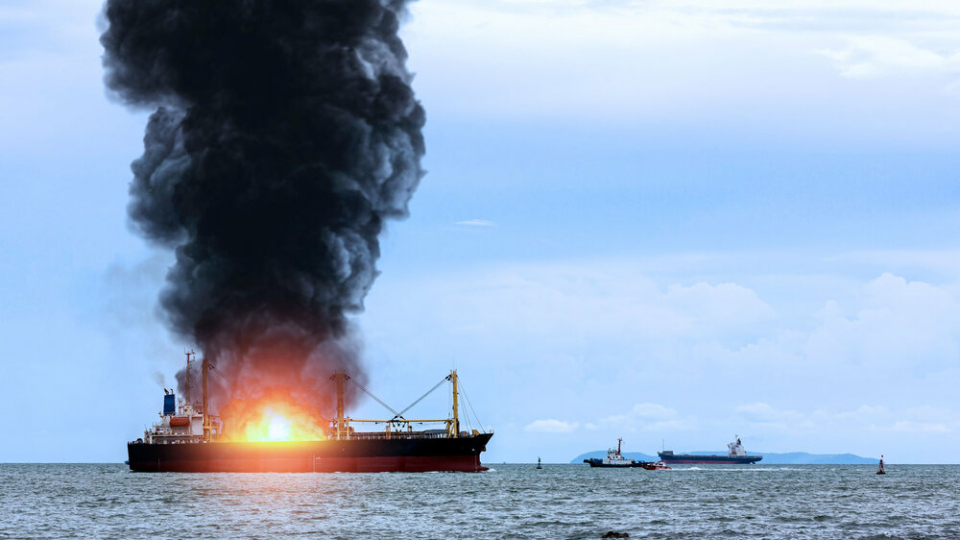Story by
Johnny Mccord
Tags /
- Business
- Cargo
- Freight

Fire—it’s among the greatest threats to your ocean-going containers, and your business.
In fact, every 10 days a crew is challenged to extinguish a fire on a container ship, according to Allianz Global Corporate & Specialty—and major fires occur nearly every 60 days.
The MV X-Press Pearl is certainly a harsh reminder of this statistic. The 13-day blaze arising from an improperly packed container carrying nitric acid ultimately sent the vessel to the bottom of the sea. The result: Toxic chemicals and tons of microplastic pellets have been released into the marine ecosystem, threatening wildlife and the local fishing economy, while the continuity of businesses shipping and receiving the cargo on board are feeling the weight of yet another supply chain disruption.
What’s driving this increasing fire threat to ocean-going containers?
Misdeclared and improperly packed cargo
While onboard fire-fighting capabilities absolutely must scale to account for the growing size of today’s mega vessels, the risk of catastrophic fire comes down to shippers. Improperly packed cargo and unintentionally—or worse, intentionally—misdeclared goods represent a threat to everyone.
And, the extent of the problem is clear.
Up to 66% of cargo damage incidents can be traced to poor packing practices in the intermodal supply chain
More than 50% of containers are not in compliance with CTU packing code
5% of containers carrying dangerous cargo may be undeclared or misdeclared
Even more troubling, one survey found that 33% of misdeclared cargo was willful—shippers misrepresented the contents of their containers to get cheaper freight rates and to bypass carrier restrictions in the face of our dire capacity crunch.
Shipping industry change is overdue
The incidence of fires on container ships is growing each year—much of it owing to human causes, and change is urgently needed. The knock-on effects to the global supply chain and the environment—not to mention the threat to the lives onboard and local communities—simply can’t be ignored.
So, how do we move forward?
To start, education is urgently needed. The growth of e-commerce has continued to skyrocket, bringing retailers with little insight into shipping regulations into the supply chain—and with them, increased risk.
Additionally, it’s time for an enforceable industry standard that has some teeth. If we’re to prevent future losses, there must be a governing body that stands up for the shipping industry—holding shippers to account when errors and misrepresentations do occur.
Certainly, data and technology can—and should—play a big part in all of this. Ultimately, reducing errors resulting from double-keying and typos, as well as preventing fraudulent activity.
At the end of the day, without the accurate information that only shippers can provide, containers will continue to be inappropriately stowed—hazardous materials placed next to reefer containers—not only increasing the risk of fire but making the work of detecting and extinguishing those fires all the more difficult.